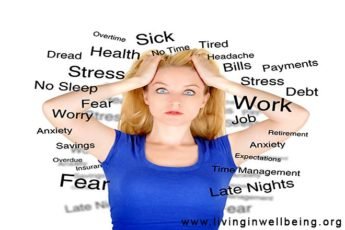
To first understand opioid addiction, you must first understand what opioids are. The term opioid refers to any drug or chemical that attaches (like a key fits into a lock) to sites in the brain called opioid receptors. The human body makes its own opioids (called endorphins) but the opioids we are concerned with when we talk about opioid addiction are those that are manufactured in a laboratory or made by plants. For instance, morphine and codeine are found in the extract (the opium) of seeds from the poppy plant, and this opium is processed into heroin. Most prescription painkillers like oxycodone, hydrocodone, and hydromorphone are synthesized in the laboratory. When a person becomes dependent upon these drugs, they need opioid addiction treatment.
What are Common Types of Opioids?
Opioids may be prescribed legally by doctors (for pain, cough suppression or opioid dependence) or they may be taken illegally for their mood-altering effects--euphoria, sedation, "to feel better", or for some, opioids are taken "just to feel normal". Not everyone who takes an opioid is at risk for dependence requiring opioid addiction treatment, but these drugs are commonly abused.
Examples of prescribed medications that sometimes lead to opioid addiction, but that can also help patients battle other types of substance abuse include:
Codeine--the opioid in Tylenol #3, Fiorinal or Fiorecet #3, and in some cough syrups.
Hydrocodone--the opioid in Vicodin, Lortab, and Lorcet.
Oxycodone--the opioid in Percodan, Percocet and OxyContin.
Hydromorphone--the opioid in Dilaudid.
Oxymorphone--the opioid in Opana.
Meperidine--the opioid in Demerol.
Morphine--the opioid in MS Contin, Kadian and MSIR.
Fentanyl--the opioid in Duragesic.
Tramadol--the opioid in Ultram.
Methadone--the opioid in Dolophine.
Buprenorphine--the opioid in Suboxone.
Although not entirely accurate, the terms opiate and narcotic are generally used interchangeably with the term opioid.
The great majority of illicitly used prescription opioids are not obtained from drug dealers. Family and friends are now the greatest source of illicit prescription opioids, and the majority of these opioids are obtained from one physician--not from "doctor shopping". More than 90% of the world's opium and heroin supply comes from Afghanistan and Southeast Asia. 'Black tar' heroin comes primarily from Mexico. Opioids are the most powerful known pain relievers, sometimes leading to opioid addiction requiring treatment. The use and abuse of opioids dates back to antiquity. The pain relieving and euphoric effects of opioids were known to Sumerians (4000 B.C.) and Egyptians (2000 B.C.).
What Happens When an Opioid is Taken?
When an opioid is taken into the body by any route (by mouth, nasally, smoking or injecting) it enters the blood stream and travels to the brain. When it attaches to an opioid receptor in the brain, our perception of pain is reduced (if we have pain) and we feel sedated. Most people also feel at least a mild pleasurable sensation, or a sense of well-being when opioid receptors are stimulated. Some report feeling more energized or motivated after taking opioids. A few experience unpleasant side effects such as nausea, vomiting or irritability. Unfortunately, those who are prone to develop an opioid addiction seem to experience an intense euphoric or pleasurable feeling when they take an opioid - leading to prolonged dependence requiring opioid addiction treatment.
An opioid seems to do something for their mood that it does not do for most people. Their experience with an opioid is quite different than it is for the person who is not prone to develop an opioid addiction. Drugs of abuse (like opioids, cocaine and alcohol) are addictive for the susceptible person because repeated use of those substances--in an effort to reproduce that intense euphoric feeling--results in long-term changes in the structure and the function of the brain. These changes in the brain start to drive their behavior, and when someone is suffering from opioid addiction, they want the drug even when the drug no longer provides pleasure.
Opioids that can be snorted, inhaled or injected reach the brain in a high concentration rapidly and result in an even more intense high, or a "rush". As a result, drugs that can be abused by these routes are often more appealing to the person seeking euphoria, and are therefore more addictive for the susceptible person.
What is Opioid Dependence? Is it the Same as Opioid Addiction?
Yes - opioid dependence and opioid addiction mean the same thing. Opioid dependence is a disease affecting the brain that involves both a physical and a psychological need for an opioid, and requires opioid addiction treatment. An individual is considered "dependent" or "addicted" when he or she exhibits this behavior--compulsive use despite obvious harm. The addicted person can't seem to stop using opioids even when it is obvious to himself or herself and others that he or she should stop. The two major signs of opioid addiction are cravings--an intense and overwhelming desire for a drug--and a loss of control--it becomes harder and harder to say no to using a drug, or controlling the amount used, and thus use becomes compulsive. Behaviors which signal a need for opioid addiction treatment include:
Denial that a problem exists, or minimizing the severity of the problem.
Impaired control over use--using more than planned.
A lot of time is spent obtaining, using or recovering from using opioids.
Important obligations like school, work, or childcare are reduced for the sake of use.
Multiple prior unsuccessful attempts to quit, or a persistent desire to quit.
Continued use despite obvious harm to one's health, job, finances or family.
What is Physical Dependence?
A person is said to have "physical dependence" on opioids if they have high "tolerance", meaning more of the substance is needed to get the same effect, and they get withdrawal symptoms if the substance is stopped. Most patients who seek opioid addiction treatment also have some degree of physical dependence. However, physical dependence alone is not sufficient to make a diagnosis of addiction. A person can be physically dependent--such as a cancer patient might be who is prescribed opioids for severe pain--and not be addicted. Again, addiction refers to certain behaviors.
Patients who are being treated for chronic pain can develop what we call "pseudo addiction". They may start to exhibit some of the same behaviors we see with addiction when they don't get adequate pain relief. When their pain is controlled, the behaviors that we associate with opioid addiction disappear. They do not need opioid addiction treatment. They need better pain management.












